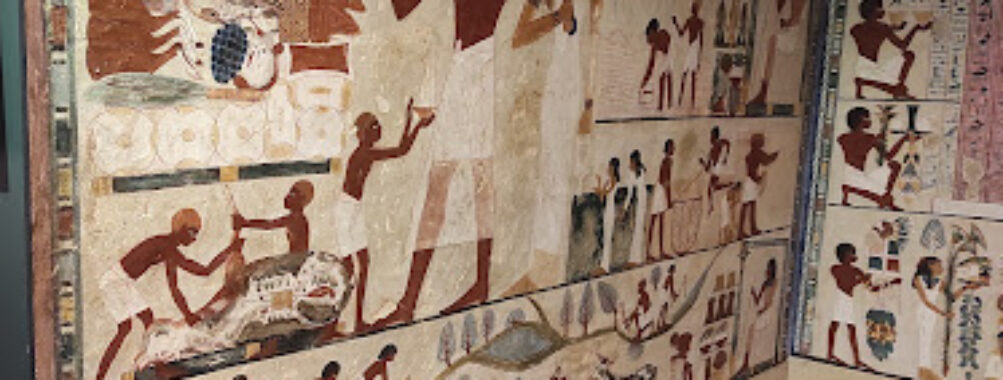
Limoges Fine Arts Museum
Table of Contents
Description
The Limoges Fine Arts Museum, known locally as Musée des Beaux-Arts de Limoges, is one of those places that quietly surprises travelers who think they’ve “seen it all” in France. Housed in the former Bishop’s Palace and overlooking the lush Jardins de l’Évêché, the museum combines art, history, and archaeology in a way that feels both scholarly and personal. It first opened its doors in 1912, and since then it has been a cultural anchor for the city. Inside, you’ll find everything from ancient Egyptian artifacts to medieval Limoges enamels, Renaissance masterpieces, and even contemporary works. It’s not a massive museum like the Louvre, but that’s part of its charm—you can actually take your time, breathe, and enjoy the art without feeling overwhelmed.
What stood out most to me was the balance between the global and the local. The Egyptian collection is unexpectedly rich, with thousands of pieces that make you wonder how they ended up in the heart of central France. Then there’s the enamel work, which is what Limoges is famous for worldwide. Seeing it up close—those intricate details, the shimmering surfaces—makes you understand why collectors still rave about it today. And if you’re into archaeology, the Gallo-Roman pieces tell the story of Augustoritum, the ancient city that eventually became Limoges. It’s like stepping back in time, but without the dust and the guesswork.
The museum isn’t perfect—no place is. Some visitors might find the layout a little traditional, and there are moments when the signage could be clearer (especially if your French is rusty). But overall, the experience feels thoughtful, well-curated, and deeply rooted in the identity of Limoges. Families, solo travelers, and even kids seem to enjoy it, which says a lot about the way the museum balances accessibility with depth.
Key Features
- Located in the historic 18th-century Bishop’s Palace, surrounded by landscaped gardens
- World-renowned collection of Limoges enamels, spanning from the Middle Ages to contemporary works
- Extensive Egyptian collection with over 2,000 artifacts, including sarcophagi and everyday objects
- Archaeological treasures from the Gallo-Roman city of Augustoritum
- Paintings and sculptures from the Renaissance, Impressionist, and modern periods
- Wheelchair accessible with adapted restrooms and parking
- Family-friendly environment with exhibits that capture children’s curiosity
- Restrooms available on-site (though no full-service restaurant)
Best Time to Visit
Timing matters when it comes to museums. The Limoges Fine Arts Museum is open year-round, but the experience changes with the seasons. Spring and early summer are especially pleasant because you can pair your visit with a stroll through the Jardins de l’Évêché right outside. The gardens are in bloom, the air feels fresh, and you can sit on a bench afterward to let the art sink in.
If you’re not a fan of crowds, weekdays are your best bet. Weekends can get a bit busier, especially in July and August when tourists flock to Limoges. Personally, I loved visiting on a rainy afternoon—it felt cozy, like the museum was offering shelter not just from the weather but from the rush of everyday life. Winter visits also have their charm, with fewer people around and more time to linger in front of the exhibits.
How to Get There
Reaching the museum is straightforward. If you’re already in Limoges, you can easily walk from the city center—it’s just a short stroll through charming streets that feel like a postcard. For those arriving by train, the museum is about a 20-minute walk from Limoges-Bénédictins station, or you can hop on a local bus or taxi if you’d rather save your energy for exploring inside.
Driving is also an option, and the good news is that the museum is equipped with wheelchair accessible parking. Just keep in mind that parking in the city center can sometimes be tricky, so give yourself a little buffer time. If you’re coming from further afield, Limoges is well connected by regional trains and highways, making it an easy day trip from places like Brive, Poitiers, or even Bordeaux.
Tips for Visiting
Here’s where a bit of insider advice can make your visit smoother and more enjoyable. First, don’t rush it. Even though the museum isn’t enormous, there’s a lot to absorb, and the collections deserve more than a quick glance. Plan for at least two hours if you want to see the main highlights without feeling like you’re sprinting through.
Second, if you’re traveling with kids, lean into the archaeology and Egyptian sections—they tend to spark the most curiosity. I once saw a group of children completely captivated by the mummies and ancient tools, while their parents were busy marveling at the enamel work. It’s a win-win.
Third, bring a small snack or plan to grab something nearby afterward since the museum doesn’t have a restaurant. There are plenty of cafés in Limoges where you can refuel and chat about what you’ve just seen. And if you’re into photography, the gardens outside are a lovely bonus—don’t forget to step out and take a few shots with the palace as your backdrop.
Finally, keep your expectations balanced. This isn’t Paris, and it doesn’t try to be. The Limoges Fine Arts Museum shines in its own way, offering a mix of local heritage and global treasures that feel intimate rather than overwhelming. If you go in with curiosity and an open mind, you’ll likely come away with a deeper appreciation not just for the art itself, but for the city of Limoges and its layered history.
Location
Places to Stay Near Limoges Fine Arts Museum
Find and Book a Tour
Explore More Travel Guides
No reviews found! Be the first to review!